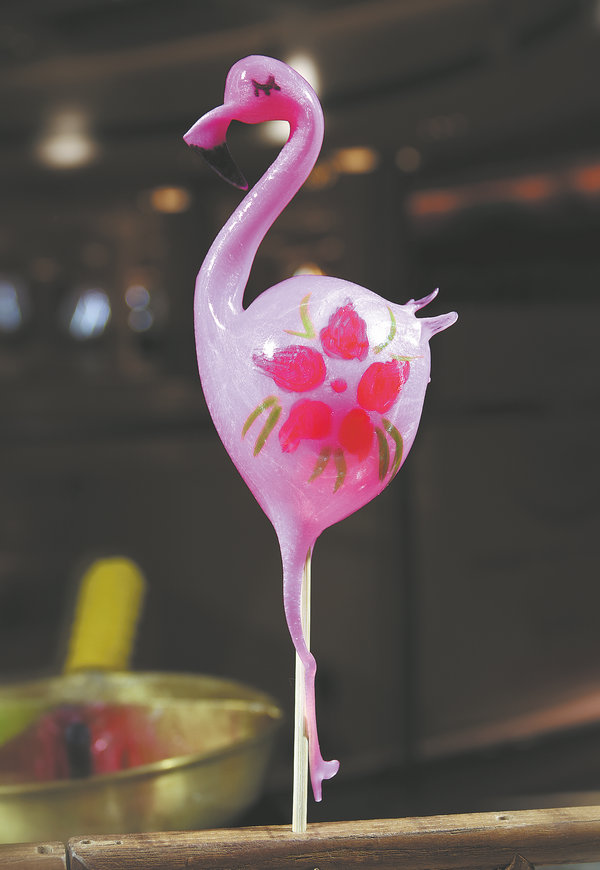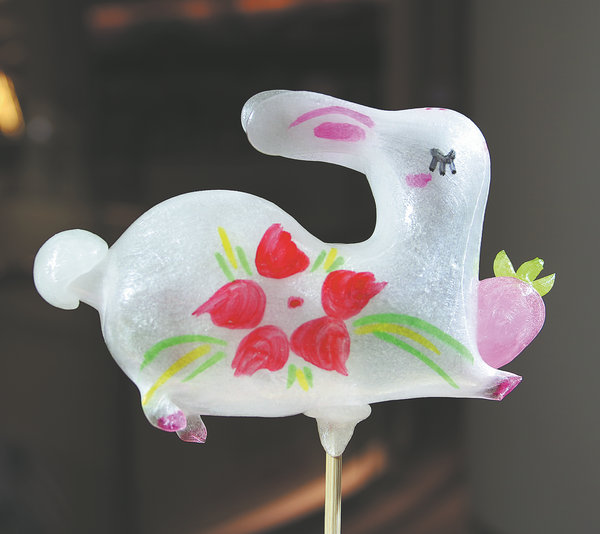

Kang Jian attracted lots of spectators around his table.
Using wheat flour as a base, he adds some ingredients to make the dough, which is then shaped, kneaded and pinched by hand, or using simple tools such as scissors and bamboo sticks, to form lifelike sculptures.
"I chose locally produced black wheat flour for the dough, which is a low-gluten flour with less elasticity, but more toughness, making it easier to shape," said Kang, 35, a provincial-level inheritor of dough sculpting from Mohe.
"Blending the methods used to make painted clay sculptures in Chinese temples, and modern techniques for sculpting the muscles and veins of the figures, I was able to make the sculptures more lifelike."

Liu Ying, a tourist from Heze, Shandong province, picked up a piece of dough and learned from Kang how to make a sculpture.
"There are several ways to shape a face," Kang told Liu. "Pressing firmly to highlight the cheekbones gives a more dignified look, while scoring the cheeks gives a more stern appearance."
Soon, Liu's dough sculpture began to take shape.
"It is my first time interacting up close with an intangible cultural heritage inheritor on a train," said Liu. "It is also a rare opportunity to learn the skill."
"When I return home, I will show my dough sculpting works to my friends," she said, holding onto the piece she had just made.